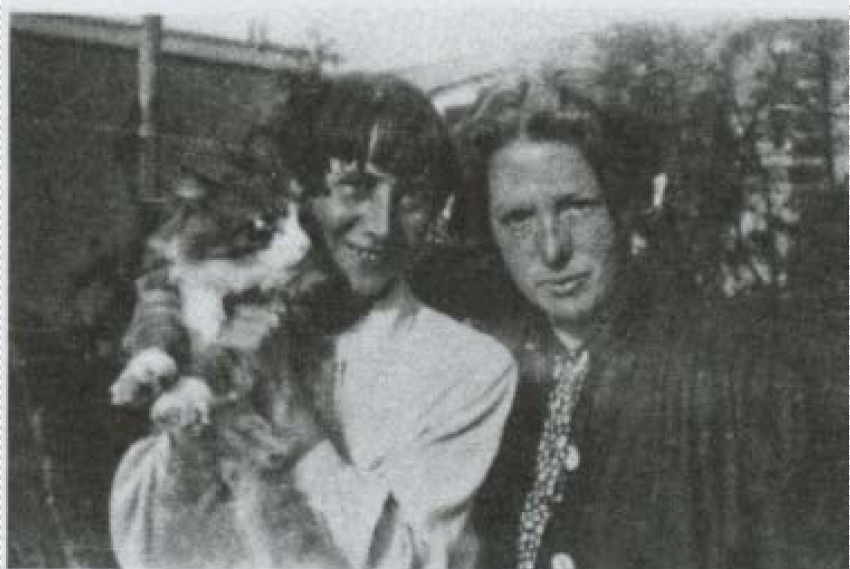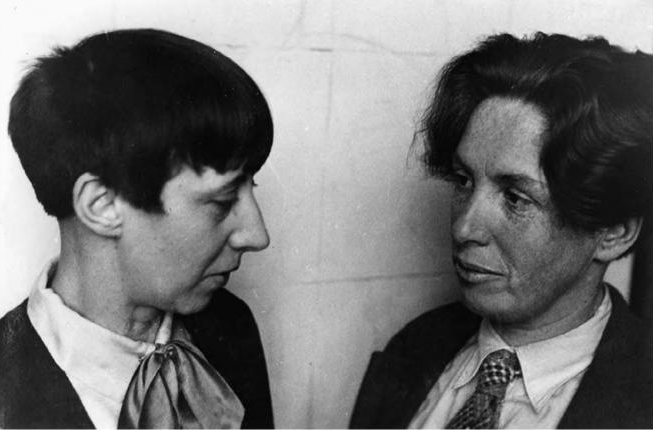Queer Places:
Heiligensee, An der Wildbahn 33, 13503 Berlin, Germania
Friedhof Heiligensee, 13505 Berlino, Germania
 Hannah Höch (November 1, 1889 – May 31, 1978) was a German Dada artist.
The exhibition Lesbian Visions at the Schwules Museum from May 10 to August
20, 2018, brought into view artistic positions by queer FLT* (females,
lesbians, trans) from over 100 years and displays works by more than 30
artists across six generations, including Hannah Höch.
Hannah Höch (November 1, 1889 – May 31, 1978) was a German Dada artist.
The exhibition Lesbian Visions at the Schwules Museum from May 10 to August
20, 2018, brought into view artistic positions by queer FLT* (females,
lesbians, trans) from over 100 years and displays works by more than 30
artists across six generations, including Hannah Höch.
Höch is best known for her work of the Weimar period, when she was one of the
originators of photomontage[1].
Photomontage, or fotomontage, is a type of collage in which the pasted items
are actual photographs, or photographic reproductions pulled from the press
and other widely produced media.[2]
Höch's work was intended to dismantle the fable and dichotomy that existed
in the concept of the "New Woman": an energetic, professional, and androgynous
woman, who is ready to take her place as man's equal. Her interest in the
topic was in how the dichotomy was structured, as well as in who structures
social roles.

Hannah Hoch and Til Brugman, 1930s
.JPG)
Other key themes in Höch's works were androgyny, political discourse, and
shifting gender roles. These themes all interacted to create a feminist
discourse surrounding Höch's works, which encouraged the liberation and agency
of women in Weimar Germany and today.
Art historian Maria Makela has characterized Höch's affair with Raoul
Hausmann as "stormy", and identifies the central cause of their
altercations—some of which ended in violence—in Hausmann's refusal to leave
his wife.[8]
Hausmann continually disparaged Höch not only for her desire to marry him,
which he described as a "bourgeois" inclination,[8]
but also for her opinions on art. Hausmann's hypocritical stance on women's
emancipation spurred Höch to write "a caustic short story" entitled "The
Painter" in 1920, the subject of which is "an artist who is thrown into an
intense spiritual crisis when his wife asks him to do the dishes."[8]
Between 1920 and 1926 Höch took vacations often spent in the company of
other dadaists like
Sophie Taeuber-Arp.
Höch ended her seven-year relationship with Raoul Hausmann in 1922. In
1926, she began a relationship with the Dutch writer and linguist
Mathilda ('Til') Brugman,
whom Höch met through mutual friends Kurt and Helma Schwitters. By autumn of
1926, Höch moved to Hague to live with Brugman, where they lived until 1929,
at which time they moved to Berlin. Höch and Brugman's relationship lasted
nine years, until 1935. They did not explicitly define their relationship as
lesbian (likely because they did not feel it necessary or desirable), instead
choosing to refer to it as a private love relationship.[9]
In 1935, Höch began a relationship with Kurt Matthies, to whom she was married
from 1938 to 1944.[9]
Höch spent the years of the Third Reich in Berlin, Germany, keeping a low
profile. She lived in Berlin-Heiligensee, a remote area on the outskirts of
Berlin, hiding in a small garden house.
She married businessman and pianist Kurt Matthies in 1938 and divorced him
in 1944. She suffered from the Nazi censorship of art, and her work was deemed
"degenerate art", which made it even more difficult for her to show her works.[10]
Though her work was not acclaimed after the war as it had been before the rise
of the Third Reich, she continued to produce her photomontages and exhibit
them internationally until her death in 1978, in Berlin. Her house and garden
can be visited at the annual Day of the Memorials (Tag des offenen Denkmals).
The 128th anniversary of her birthday was commemorated on 1 November 2017
by a Google Doodle.[11]
Höch is also connected with Florine
Stettheimer.
My published books:


BACK TO HOME PAGE

 Hannah Höch (November 1, 1889 – May 31, 1978) was a German Dada artist.
The exhibition Lesbian Visions at the Schwules Museum from May 10 to August
20, 2018, brought into view artistic positions by queer FLT* (females,
lesbians, trans) from over 100 years and displays works by more than 30
artists across six generations, including Hannah Höch.
Hannah Höch (November 1, 1889 – May 31, 1978) was a German Dada artist.
The exhibition Lesbian Visions at the Schwules Museum from May 10 to August
20, 2018, brought into view artistic positions by queer FLT* (females,
lesbians, trans) from over 100 years and displays works by more than 30
artists across six generations, including Hannah Höch. 
.JPG)

